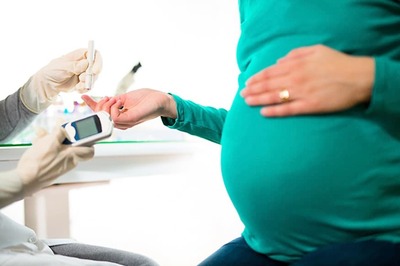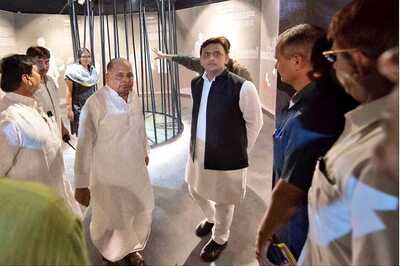
views
CHENNAI: Reviving the Mono Rail Project (MRP) which was given up by the previous DMK regime, the AIADMK government on Friday announced that 300km in Chennai would be covered by MRP. Besides, investigations will be conducted to introduce this project in other Corporations like Coimbatore, Madurai and Trichy, to decongest the traffic. However, the Metro Rail Project which is being implemented on a fast track in Chennai, is unlikely to be stopped. Describing the Metro Rail Project as a cost intensive project that would take considerable time for completion, Governor Surjeet Singh Barnala, in his customary address to the State Assembly, said since the Metro Rail Project would cover only 45km, the Monorail Project would be in position to integrate with the existing transport system. In the first phase, 111km will be covered under this project and eventually it would cover 300km in a phased manner.He also said that investigations would be undertaken for introducing the Monorail System in other Corporations in the State.Observing that traffic congestion continues to pose a major challenge to administration in Chennai and other cities, the Governor said the modal share of public transport in the urban transport system of Chennai was currently 27 per cent, which should be eventually increased to 46 per cent by 2025. “As such, the government will put in place an integrated multi-modal transport system in Chennai,” he added.What happened so far on the Monorail and Metro Rail systems in Tamil Nadu? Talks about implementing a mass rapid transport system by rail within Chennai assumed a concrete shape during the previous AIADMK regime which, initially, opted for the Metro Rail Project. The AIADMK government had drawn up a five-year-plan for setting up a metro rail project and the estimated cost of the project was `5,086.85 crore. On a couple of occasions, the then government had urged the Centre to clear the project soon.But, later, the AIADMK government had opted for the Monorail system stating that the Metro Rail system would not Chennai which had come under Seismic Zone III (earthquake prone). As such, security of the passengers who travel through metro rail would be in danger as the passage for the rail would be underground, the government argued. The AIADMK government opted for the Mono rail system on the basis of the recommendation by the Pallavan Transport Consultancy Services Ltd, which studied the various urban transport alternatives.The government said Monorail’s advantages include safety, quicker project execution, low noise pollution and lower cost to consumers. Furthermore, the system could be implemented quickly, without undue traffic diversion and would involve minimal acquisition of land and little disruption to existing utilities and services. Being an elevated system, Mono Rail had lesser accident possibilities as well.However, political parties in the State, particularly the PMK, opposed the it and the party even filed a PIL before the Madras High Court. Passing orders on the PMK’s petition, the court restrained the Tamil Nadu government from awarding the final contract or work orders for the project without prior permission. But after the DMK government assumed office in May 2006, it gave up the Monorail proposal and went back to the Metro Rail project.The DMK government contended that the Mono Rail Project was suitable only for tourist destinations and not a for place like Chennai. Things moved faster during the past four years and the then Deputy CM MK Stalin met the officials of Japan Bank of International Cooperation (JBIC) and got financial assistance for the project on February 6, 2008. Stalin also studied the working of Tokyo Metro Rail system.




















Comments
0 comment